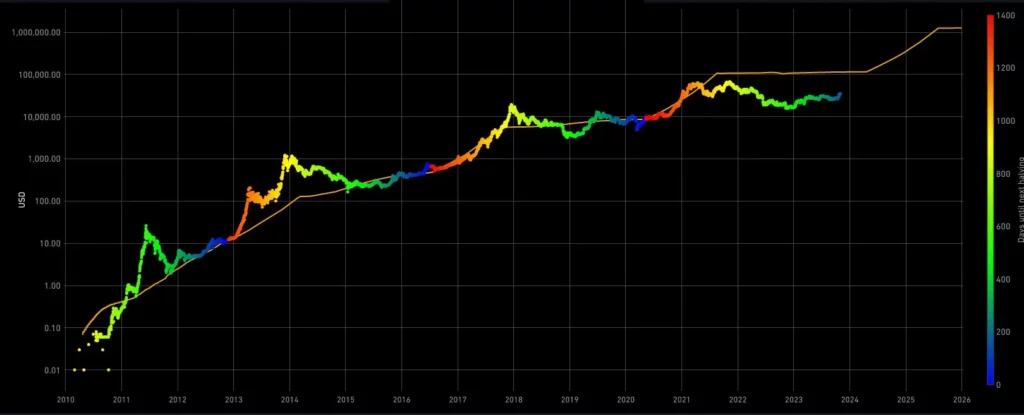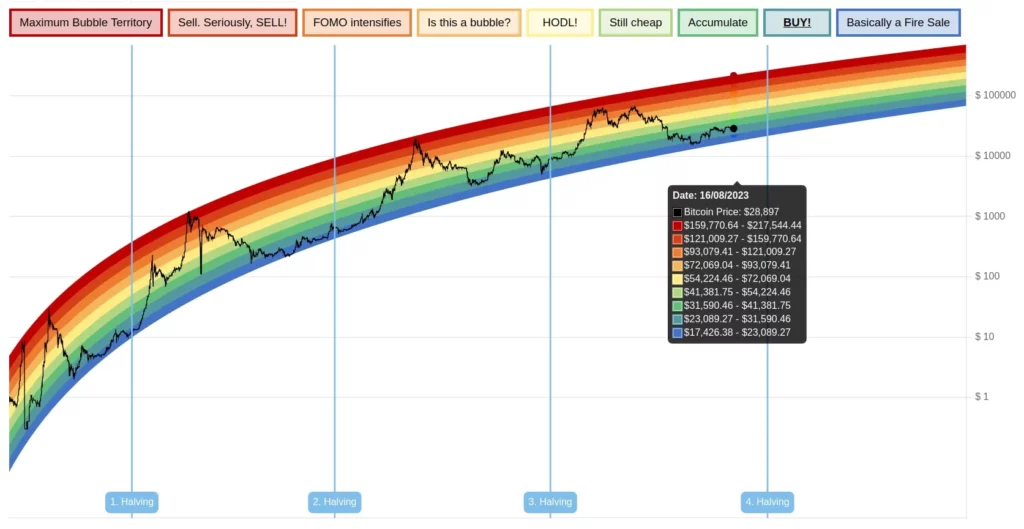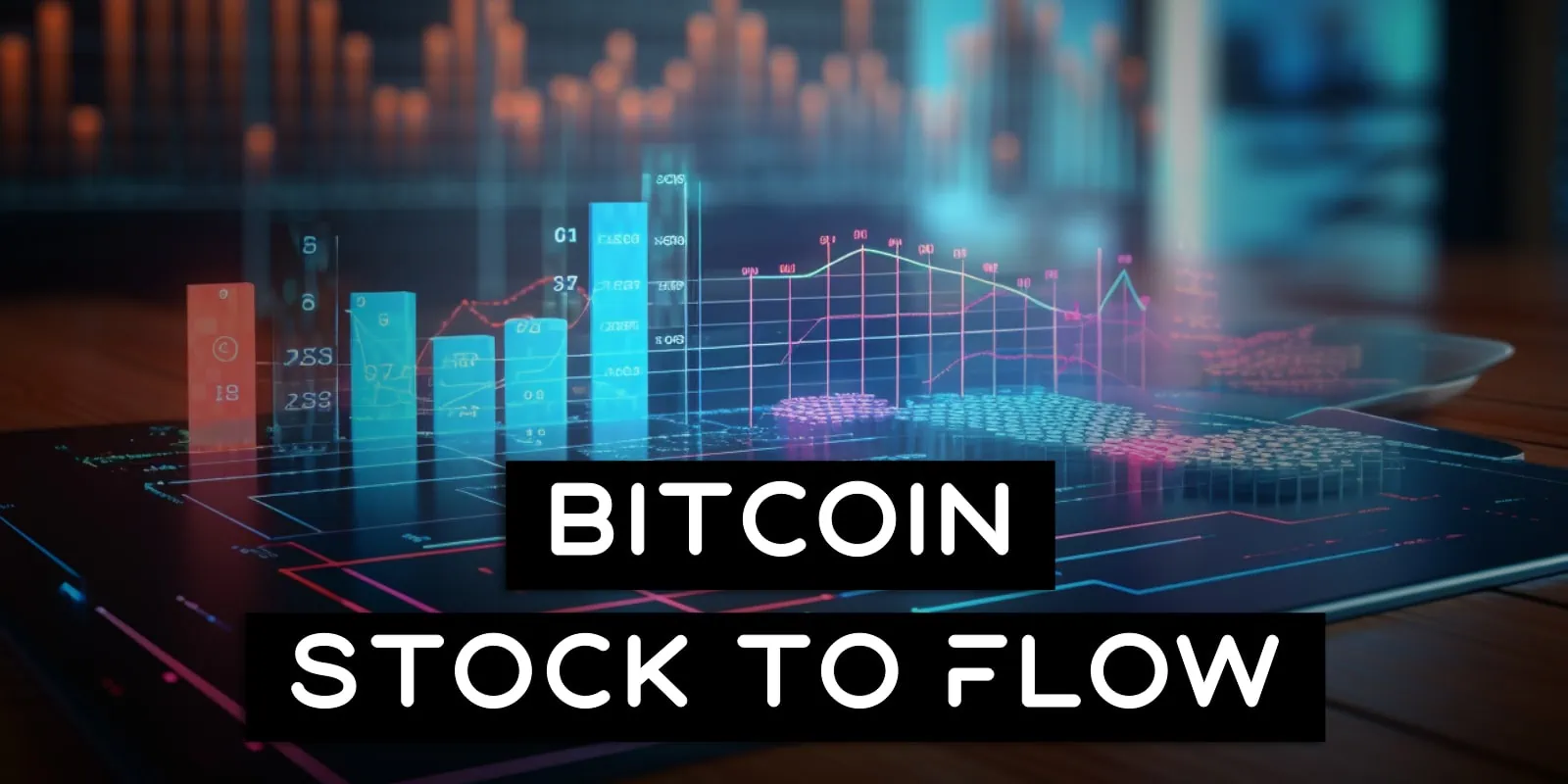Note: The bitcoin stock to flow model and the bitcoin prices it displays do not constitute investment advice. Historic performance is no guarantee of future performance and you should always consult a financial planner before investing in any asset.
Contents
What Is Stock To Flow (S2F)?
Stock to flow is a simple metric that’s commonly used to measure and price commodities such as gold and silver. Stock refers to the total circulating supply of the asset while flow is how much of it is being produced or mined each year.
By knowing both of these metrics and comparing them an investor can get an idea of how abundant or scarce an asset is. As the price of something is heavily influenced by the supply and demand dynamics, the S2F model helps to better understand the supply rate and thus, price.
Stock To Flow Ratio
To calculate the stock to flow ratio you simple divide the total supply by the flow rate.
Total Supply / New Supply = Ratio
For example, there is estimated to be around 200,000-300,000 tons of gold world wide, this is the total supply. Each year gold mines produce around 3,000-3,500 tons of new gold with it being more towards the 3,500 tons lately.
To calculate the stock to flow ratio for gold the equation would look like this:
300,000 / 3,500 = 85.71
Another way of interpreting this ratio is that it would take 85.71 years at the current rate of gold production to completely replace the current supply.
The higher the stock to flow ratio is for an asset, the higher scarcity it has. Scarcity is one of the two main characteristics that makes something a good Store Of Value with durability being the other.
| Total Supply | Yearly Increase | S2F Ratio | |
|---|---|---|---|
| Bitcoin (2023) | 19,249,608 | 328,500 (1.68%) | 58 |
| Gold | 300,000 tons | 3,500 tons (1.2%) | 85 |
| Silver | 550,000 tons | 25,000 tons (4.5%) | 22 |
| Palladium | 222 tons | 200 tons (111%) | 0.9 |
| Platinum | 172 tons | 190 tons (110%) | 0.9 |
| USD | 20.75 trillion (M2) | ~1 trillion (4.7%) | 21 |
As you can see from the above table, it’s no coincidence that both gold and bitcoin are seen to be excellent stores of value as they have the highest stock to flow ratios.
Bitcoin Halving Event
The Bitcoin Halving (also called Bitcoin Halvening) happens every 210,000 blocks or roughly every 4 years and is when the block reward for Bitcoin miners is halved. Currently in 2024 the block subsidy is 3.125 BTC.
As this impacts the annual flow side of the stock to flow ratio it increases Bitcoins scarcity. Each 4 years this happens again and again shocking the delicate supply and demand balance that has a huge impact on the price of any asset.
| Total Supply | Yearly Increase | S2F Ratio | |
|---|---|---|---|
| Bitcoin (2023) | 19,249,608 | 328,500 (1.68%) | 58 |
| Bitcoin (2025) | 19,800,515 | 164,250 (0.83%) | 120 |
| Bitcoin (2029) | 20,400,590 | 82,125 (0.40%) | 248 |
| Bitcoin (2033) | 20,700,852 | 41,062.5 (0.19%) | 504 |
If everything else stays the same, a decrease in the supply of an asset or good will result in its price increasing. As use and demand for Bitcoin has constantly increased over the years this simply puts even more pressure on bitcoin’s price.
Understanding The Bitcoin Stock To Flow Model
While stock to flow is not a new concept and has been used for many other commodities such as gold or silver over the years by investors, the Bitcoin stock to flow model was originally created by an anonymous individual called Plan B.
What’s extremely unique about Bitcoin and its stock to flow model is that due to Bitcoins pre-programmed mining schedule, everyone knows exactly how much new supply will be minted each year, every year, all the way out to 2140. No other asset has this predictability.

We also know at all times what the exact supply of Bitcoin is, where as no one truly knows how much gold or silver there might be in the world. This allows for Bitcoins stock to flow to be known and accurate for decades where as others are just guesses.
Stock To Flow Line
On top of the stock to flow line (the orange line above) Plan B then used regression analysis to overlay Bitcoins price on the chart (the colored line above). As stated, the price of an asset or good is heavily linked to its existing supply and demand, so this fact together with Bitcoins known supply schedule allowed them to generate bitcoin price prediction data far out into the future.
After this initial analysis was done, they further added various colors to help evaluate the bitcoin value relative to its stock to flow. As the flow or new supply decreased, price is assumed to increase which means the current bitcoin price could be either a bargain or over priced and is marked as such.
Why Does it Use A 463 day Moving Average?
It’s common when analyzing data to smooth it out using averaging windows. Rather than plotting each individual data point which can be volatile, you combine a certain number of days in a moving window and average them out. This removes one off outliers and helps to paint a clearer picture of what’s expected.
Looking at Plan B’s official stock to flow model you’ll notice that they use a 463 day moving window average. This stems from Preston Pysh, who posited that bitcoin cycles happen in three phases:
- Bull Run
- Correction
- Reversion To The Mean
Oddly Preston estimated there to be 200,000 blocks in each of the market cycles (rather than using the defined 210,000 blocks per halving cycle) and given there’s 3 different phases that equals 200,000 / 3 = 66,666.66 blocks per phase.
From here there are approximately 144 blocks per day (6 * 24 = 144) meaning that each cycle lasts for on average of 66,666.66 / 144 = 463 days per phase.
Although you can technically use any window size you wish, 463 days gives a great high level overview allowing the reader to fully account for all three cycle phases in one go.
Why Is The Stock To Flow Model So Popular?
Bitcoin’s stock to flow model has for years garnered increasing popularity. This is mainly due to two factors: the historical accuracy of its price line and the very bullish future bitcoin price predictions.
It’s easy to get attention from the Number Go Up (NgU) community simply by predicting that Bitcoin (or any asset for that matter) will go to the Moon. However it’s a different matter when that prediction is backed by very basic and well regarded laws of economics and has accurate historical data points to back it all up.
The stock to flow model suggests some pretty bullish predictions too, stating that it expects bitcoin to be at around $1.25 million dollars per coin by 2026! As for its technical analysis, the long term price data has heavily matched the BTC price for years on end.
Supply, Demand & Price Prediction Using The S2F Model
Speaking of price, it should be noted that the stock to flow model only focuses on the supply side of things, which is really only half the story. Price is a result of supply and demand and where they equalize at.
The supply of new bitcoins could go to zero sending the stock to flow ratio to infinity, but if there’s a huge hack that undermines the security of the Bitcoin network resulting in no one wanting to use it then the demand and the BTC price will plummet.
This demand component is just as important and is completely ignored in this model.
Is The Bitcoin Stock-To-Flow Model Accurate?
Given this lack of demand side information, a lot of digital ink has been spilled online over whether the stock to flow model is accurate or not. Even if you take into account more demand side evidence it still misses an important point. Models, no matter how accurate, aren’t ever meant to be fully relied on as “accurate”.
You should always assume that any future predictions of price moves or returns can be 100% wrong. As the stock to flow model is quite simplistic as well, this only increases the likelihood that its predictions of bitcoin prices will be inaccurate.
Demand is heavily influenced by a number of external factors that effect the fair value price of bitcoin and many of these are entirely unpredictable. These factors can have slight or huge impacts in both directions and include:
- Previously mentioned halving events
- General adoption, awareness and sentiment in the community (tends to grow slowly)
- Regulations, taxes and laws, especially new ones
- Broader economic environment (for example if there’s a huge recession)
- Black swan events such as hacking or bankruptcies of major Bitcoin businesses
- New upgrades or use cases for Bitcoin that open up a broader market
While it’s interesting to note how accurately it’s predicted things in the past, it should again be stressed that these models shouldn’t be taken as bullet proof.
Other Bitcoin Forecasting Models

Another similar forecasting model is the Bitcoin Rainbow Chart which overlays rainbow color bands onto a Logarithmic Regression curve in order to highlight market sentiment at the various colors of the rainbow.
This makes for a quick and easy way for investors to tell when the best possible opportunity for buying or selling is. By using the Bitcoin rainbow chart, investors can better understand these potential future trends and price movements of Bitcoin as well as know whether it’s historically a good time to buy bitcoin or not.
FAQ
What Is Plan B Stock-To-Flow Bitcoin Prediction?
While the idea of stock to flow has been around for years when analyzing precious metals and other value commodities, an anonymous individual by the name of Plan B applied its principles to Bitcoin.
Combined with its stable and predictable supply plan they were able to capture a lot of attention due to how accurately Bitcoins price moves have mirrored its predictions. If its predictions hold true out to 2026, it estimates a price of around $1.25 million per coin.
Is Bitcoin Stock-To-Flow Broken?
While the price that the stock to flow chart predicts has diverged from its price line since 2021, this has happened in the past in 2013 with it reverting back to its prediction in 2015. As such, it might be the case that at some point in the future it’ll revert again to the price prediction. The longer Bitcoins price remains outside its estimates, the more “broken” the model will become.
How Is Stock-To-Flow Calculated?
Stock to flow is calculated by dividing the current circulating supply (stock) by the amount of supply that is generated or mined (flow). In other words: Stock-to-Flow = current stock / new production.
Has The Bitcoin S2F Model Been Historically Reliable?
While the price predicted by the stock to flow model is rarely the current trading price of bitcoin, most are happy to call it quite reliable within a certain standard deviation and using a certain number of days to “smooth” the line. That being said, there are also a number of times where it has decoupled from its predictions, often for years at a time. It’s always, eventually, snapped back though.
What Is The Stock-To-Flow Model For Bitcoin In 2030?
On the 1st of Jan, 2030 there will be 20,482,784 bitcoins in circulation with 82,125 bitcoins being generated due to future bitcoin mining for the year. This means the stock to flow ratio for Bitcoin in 2030 will be 249. This translates to an inflation rate of 0.40% p.a. which is roughly three times smaller than gold.



